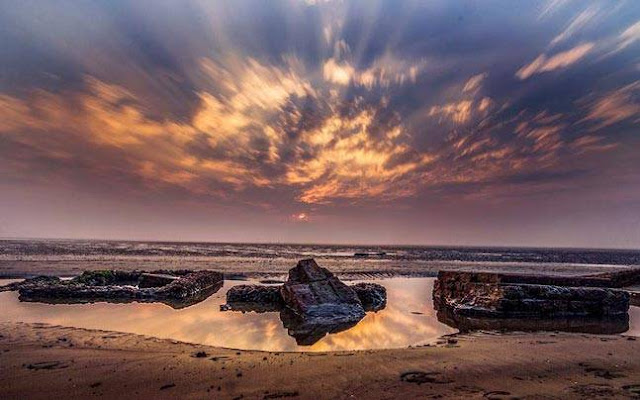Mehrangarh Fort is also known as “Mehran Fort” located in Jodhpur, Rajasthan. The foundation of the Mehran fort was decided on 12 May 1459 by Rao Jodha on a rocky hill 9KM to the south of Mandore. Rao Jodha, previously known as “Marwar” founded Jodhpur in 1459. He was one of Ranmal's 24 sons and became the 15th Rathore ruler. The fort rising perpendicular and impregnable from a rocky hill that itself one of the most magnificent forts in India. Still run by the Jodhpur royal family, Mehrangarh is packed with rich history and legends.
Mehrangarh though the fortress was originally started in 1459 by Rao Jodha, founder of Jodhpur, most of the fort which stands nowadays dates from the period of Jaswant Singh of Marwar (1638–78). The fort is located at the centre of the city spreading over 5 kilometers on top of a high hill. Its walls, which are up to 118 feet high and 69 feet wide, protect some of the most gorgeous and historic palaces in Rajasthan. Further, the striking silhouette of the Mehrangarh fort against the stunning clouds at Jodhpur offers great view.
Mehrangarh Fort built around 1460, situated 410 feet above the city and is enclosed by striking thick walls. Mehrangarh Fort is one of the largest forts in India, as inside and its boundaries are numerous palaces famous for their intricate carvings and extensive courtyards. There’s a museum in Mehrangarh Fort, one of most admired stocked museums in Rajasthan. In one section of museum, selection of old royal palanquins, including the elaborate domed gilt Mahadol palanquin which was won in a battle from the Governor of Gujarat in 1730. Moreover, the museum exhibits the heritage of the Rathores in arms, costumes, paintings and decorated period. Moreover, on the left side of fort, a chhatri of Kirat Singh Soda, a brave solider who fell on the spot defending the Mehrangarh Fort.?
Mehrangarh Fort holds the pride of place in Jodhpur because of its impressive architecture and the diverse history accompanying with it. Moreover, entry to the fort is gained through a series of gates, thus there are seven famous gates, among them the most famous are “jayapol” built by Maharaja Man Singh in 1806, “Fattehpol” built by Maharaja Ajit Singh built to celebrate the victory over Mughals in 1707, “Dedh Kamgra Pol” which still bears the scars of bombardment by cannonballs, and “Loha Pol”, which is the final gate into the main part of the fort complex. The imprints of the impact of cannonballs fired by attacking armies of Jaipur can still be seen on the second gate.
Within the fort there are several dazzlingly crafted and decorated palaces. These include Moti Mahal, Phool Mahal, Sheesha Mahal, Sileh Khana, Daulat Khana, Rang Mahal, Chandan Mahal and Maan Vilas are exquisite splendors. The fort museum houses a rare collection of palanquins, howdahs, royal cradles, miniatures, musical instruments, costumes and furniture. The ramparts of the fort house preserved old cannon, and provided a breath-taking view of the city.
The fort also encloses the Mehrangarh Fort Museum, exhibits all of the historical things, like the royal palanquins, miniature paintings, furniture, and historic armory etc. Mahadol, the Palanquin is mostly covered with gold and silver embossed sheets, which were fastened onto the elephant's back. Palanquins were most popular means of travel and circumambulation for the ladies of the nobility up to the second quarter of the 20th century. They were also used by male nobility and royals on special occasions. Daulat Khana - Treasures of Mehrangarh Museum gallery displays one of the most important and best preserved collections of fine and applied arts of the Mughal period of Indian history, during which the Rathore rulers of Jodhpur maintained close links with the Mughal emperors. It also has the remains of Emperor Akbar.
Moreover, rare collections of armour are displays i.e., sword hilts in jade, silver, rhino horn, ivory, shields studded with rubies, emeralds and pearls and guns with gold and silver work on the barrels. Also some personal swords of numerous emperors, among them outstanding historical piece like the Khaanda of Rao Jodha, weighing over 3 kg, the sword of Akbar the Great and the sword of Timur. There’s a gallery displays colors of Marwar-Jodhpur, the finest example of Marwar paintings. One of Turban Gallery in the Mehrangarh Museum seeks to preserve, document and display the many different types of turbans once prevalent in Rajasthan; every community, region and festival having had its own head-gear.
Jodhpur is well-known for its warm climate and its location of being right at the edge of the Thar Desert, and with the number of amazing things to see and do in this city; you just can’t miss the prominence of Mehrangarh Fort. The Fort has been declared a unique geological location by National Geological Monument by the Geological Survey of India to encourage Geotourism in the country. Thar Desert region, spread over an area of 43,500 km2 represents the last phase of igneous activity of Precambrian age in the Indian Subcontinent. Rao Jodha Desert Rock Park spreads over 72 hectares, adjoining Mehrangarh Fort. The park contains ecologically restored desert and arid land vegetation, distinctive volcanic rock formations such as rhyolite, with welded tuff, and breccia, sandstone formations. Nowadays, it is acknowledged as one of the best preserved fort in India. You don’t need a ticket to enter the fort itself, only the museum section.



















































